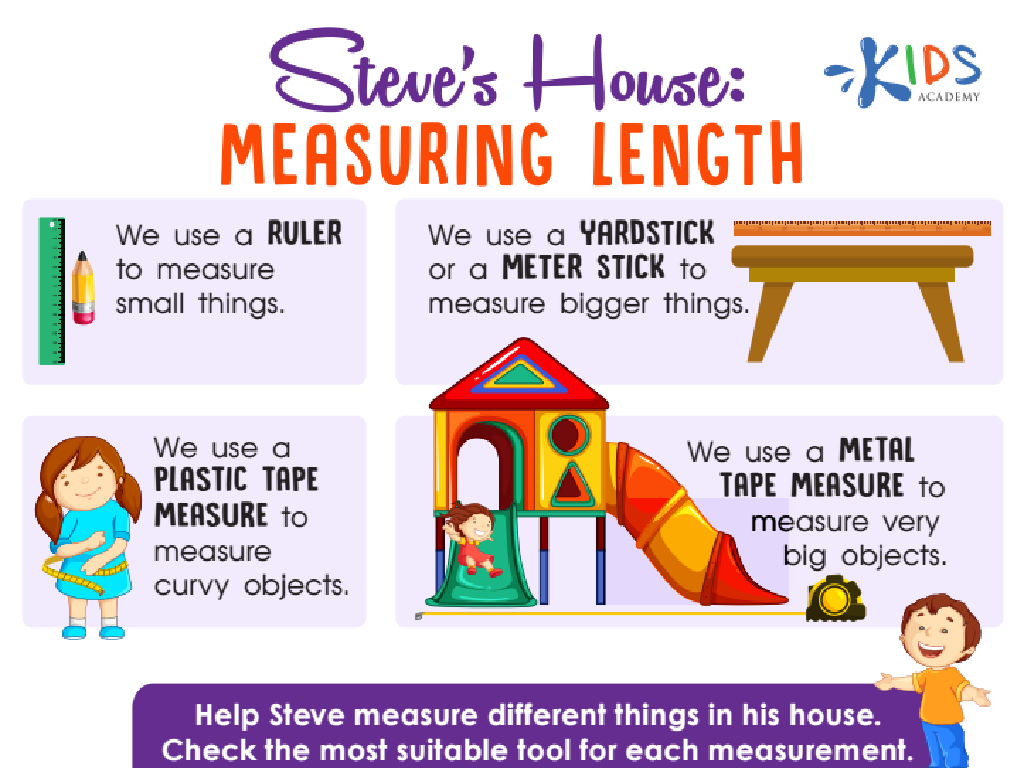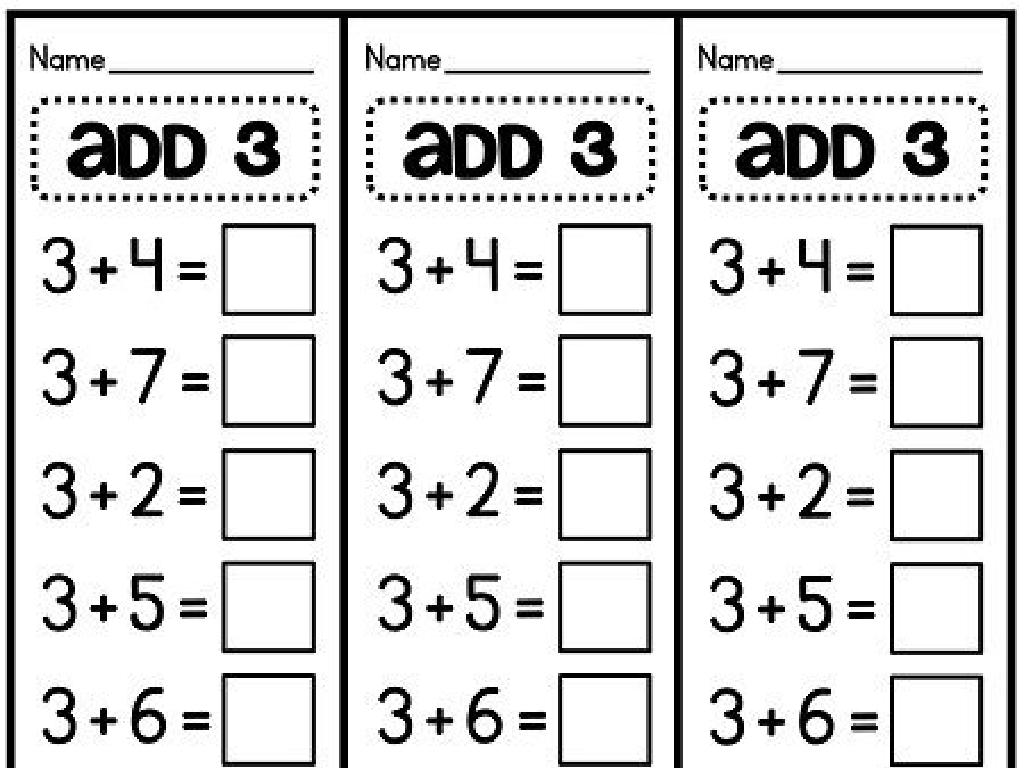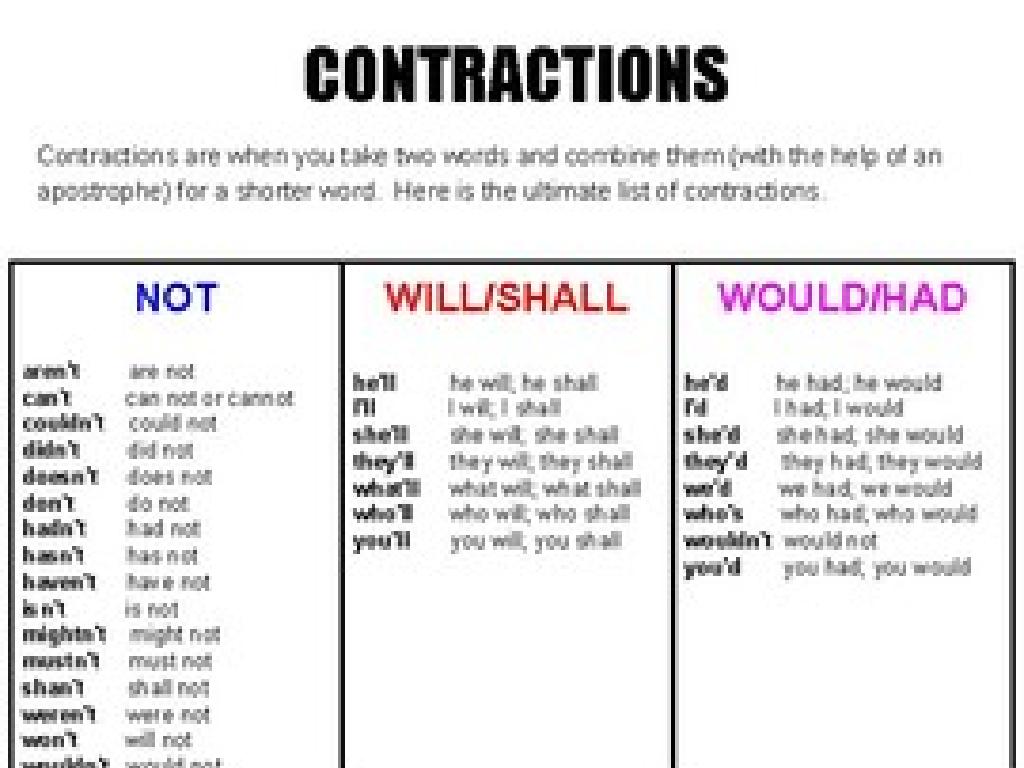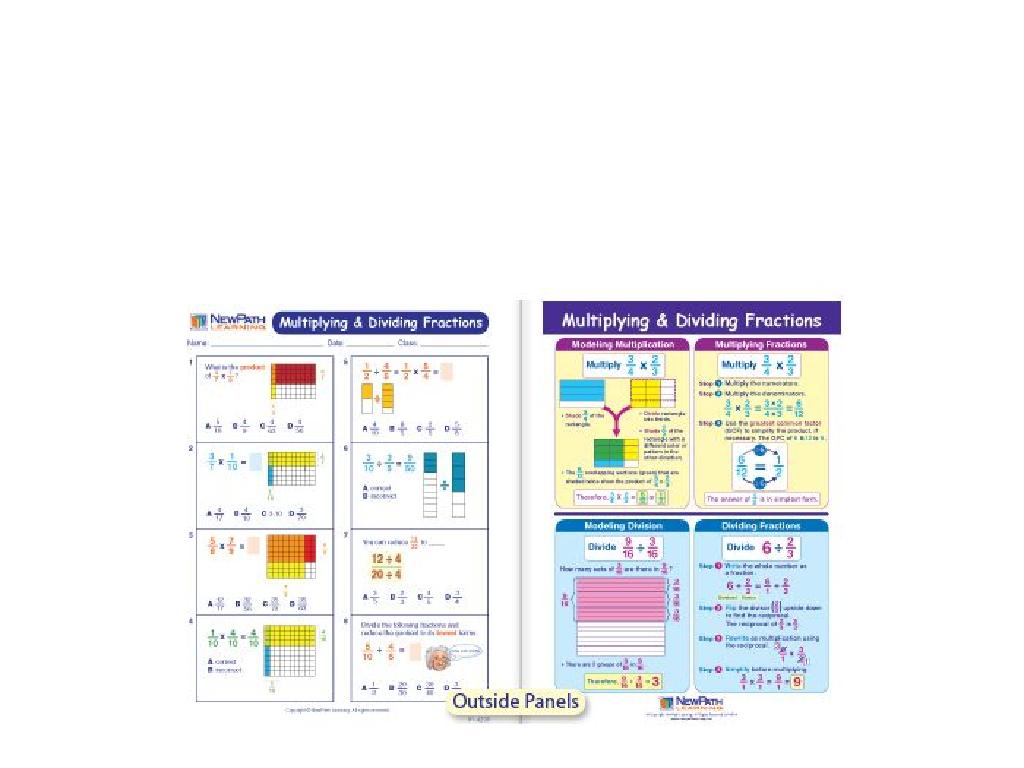Identify Gerunds And Their Functions
Subject: Language arts
Grade: Seventh grade
Topic: Verb Tense
Please LOG IN to download the presentation. Access is available to registered users only.
View More Content
Exploring Gerunds in Language Arts
– What is a gerund?
– A gerund is a verb ending in -ing that functions as a noun.
– Gerunds in daily language
– Used in sentences like: ‘Swimming is fun’ or ‘I enjoy reading.’
– Functions of gerunds
– They can act as subjects, objects, or complement.
– Examples of gerunds
– ‘Running is healthy,’ ‘She likes dancing,’ and ‘They’re good at drawing.’
|
This slide introduces the concept of gerunds to seventh-grade students, focusing on their role within verb tenses. A gerund is a verb form that ends in -ing and functions as a noun in a sentence. It’s important for students to recognize how gerunds are used in everyday language, often without even realizing it. By providing examples and explaining the functions of gerunds as subjects, objects, and complements, students can better understand and identify gerunds in various contexts. Encourage students to create their own sentences using gerunds to solidify their understanding. The examples provided should help them relate to the material and see the practical application of gerunds in daily communication.
Understanding Gerunds
– Define a gerund
– A gerund is a verb form used as a noun.
– Gerunds end with -ing
– Gerunds function as nouns
– Example: ‘Swimming is fun.’
– ‘Swimming’ is the gerund, acting as the subject.
|
Introduce the concept of gerunds to the students by defining what a gerund is and explaining that it is a verb form that ends in -ing and functions as a noun in a sentence. Use clear examples to illustrate how gerunds can act as subjects, objects, or complements within sentences. For instance, in the sentence ‘Swimming is fun,’ ‘Swimming’ is a gerund functioning as the subject of the sentence. Encourage students to identify gerunds in various sentences and understand their role in sentence structure. Provide additional examples and exercises to reinforce the concept.
Gerunds as Subjects
– Gerunds as sentence subjects
– A gerund is a verb ending in -ing used as a noun
– Example: ‘Running is my favorite hobby.’
– ‘Running’ is the gerund, acting as the subject
– Activity: Identify the gerund
– Find and underline the gerund in given sentences
|
This slide introduces the concept of gerunds when they function as the subject of a sentence. A gerund is a verb form that ends in -ing and acts as a noun. For example, in the sentence ‘Running is my favorite hobby,’ ‘running’ is the gerund and is the subject of the sentence. The class activity will help students identify gerunds in various sentences. Provide students with sentences containing gerunds and ask them to underline the gerunds. Encourage them to explain why the identified word is a gerund. This exercise will enhance their understanding of gerunds and their function in sentences.
Gerunds as Objects
– Gerunds can be verb objects
– A gerund is a verb ending in -ing that functions as a noun.
– Example: ‘I enjoy painting.’
– ‘Painting’ is the activity that ‘I’ enjoy, acting as the object of the verb.
– Discuss ‘painting’ as an object
– We’ll analyze how ‘painting’ serves as the object in the sentence.
|
In this slide, we’re focusing on the role of gerunds when they act as objects in a sentence. A gerund, which always ends in -ing, is a verb form that functions as a noun. It’s important for students to recognize that when a verb like ‘enjoy’ is followed by another action, that action is often a gerund serving as the object of the verb. In the example ‘I enjoy painting,’ ‘painting’ is the gerund and is the object of ‘enjoy.’ Encourage students to find other examples of gerunds used as objects in sentences and discuss how the meaning of the sentence changes with different gerunds. This will help them understand the versatility and function of gerunds in English grammar.
Gerunds after Prepositions
– Gerunds follow prepositions
– A gerund is a verb ending in -ing used as a noun
– Example: ‘She is good at drawing.’
– ‘at’ is the preposition, ‘drawing’ is the gerund
– Identify the preposition
– Prepositions can be words like ‘at’, ‘in’, ‘on’
– Find the gerund in a sentence
– Gerunds can be subjects, objects, or complements
|
This slide focuses on the relationship between gerunds and prepositions. Gerunds, which are verbs ending in -ing that function as nouns, often come after prepositions in sentences. An example helps illustrate this point. Students should learn to identify both the preposition and the gerund in a sentence. In the example provided, ‘at’ is the preposition that is followed by the gerund ‘drawing.’ Encourage students to practice by finding other examples of gerunds following prepositions in different sentences. This will help them understand how gerunds function within the structure of a sentence.
Gerunds in Complex Sentences
– Understanding gerunds in complexity
– Example: Studying in a complex sentence
– ‘After studying for hours, she felt prepared.’ – ‘studying’ is the gerund.
– Breaking down complex sentences
– Analyze sentence structure to locate the gerund.
– Identifying the gerund and its role
– Determine the function of ‘studying’ as the subject of the action.
|
This slide aims to deepen students’ understanding of gerunds within complex sentences. Start by explaining that gerunds can act as nouns despite originating from verbs. Use the example provided to illustrate how ‘studying’ functions as a gerund and is the subject of the sentence. Encourage students to break down sentences by identifying the verb, then seeing if it’s used as a noun, which would make it a gerund. Emphasize that gerunds can be subjects, direct objects, indirect objects, and objects of prepositions. Have students practice with additional sentences, identifying gerunds and their functions to reinforce the concept.
Let’s Practice with Gerunds!
– Identify gerunds in sentences
– Look for ‘-ing’ words acting as nouns
– Create sentences with gerunds
– Use gerunds as subjects, objects, or complements
– Share your gerund sentences
– Practice speaking skills and learn from peers
|
This slide is designed for a class activity focused on gerunds. Students will first identify gerunds, which are verbs ending in ‘-ing’ that function as nouns, in provided sentences. Then, they will create their own sentences using gerunds in different functions such as subjects, direct objects, subject complements, or objects of prepositions. Finally, they will share their sentences with the class, allowing them to practice their speaking skills and learn from each other. As a teacher, facilitate the activity by providing examples and guidance on how gerunds are used in sentences. Encourage creativity and provide feedback on their sentences to ensure understanding.
Class Activity: Gerund Hunt
– Pair up for a gerund search
– Find gerunds in magazines/articles
– List gerunds and their functions
– Gerunds function as nouns in sentences
– Present findings to the class
|
This interactive class activity is designed to help students identify gerunds and understand their function as nouns within sentences. Students will work in pairs to foster collaboration, searching through provided magazines or articles to find gerunds. They will then list these gerunds, noting whether they act as subjects, direct objects, indirect objects, or objects of prepositions. After the hunt, each pair will present their findings to the class, allowing for peer learning. As a teacher, facilitate the activity by providing a variety of reading materials, guiding students as needed, and ensuring that each pair has the opportunity to share their work. Possible variations of the activity could include finding gerunds in song lyrics, creating sentences with identified gerunds, or even writing a short story using a list of gerunds.
Wrapping Up: Gerunds and Their Roles
– Recap: What are gerunds?
Gerunds are verbs ending in -ing that function as nouns.
– Understanding gerunds in sentences
They can act as subjects, objects, or complement the sentence structure.
– Homework: Craft a short story
Use your creativity to write an engaging story.
– Include at least 10 gerunds
Ensure your story has 10 different gerunds to practice their use.
|
As we conclude today’s lesson, ensure that students have a clear understanding of gerunds and their functions within sentences. They should be able to identify gerunds acting as subjects, direct objects, subject complements, and objects of prepositions. For homework, students will write a short story incorporating at least 10 gerunds, which will help them apply what they’ve learned in a creative context. Encourage them to think about how gerunds add depth to their writing. In the next class, be prepared to discuss some of the stories and highlight the correct use of gerunds.






